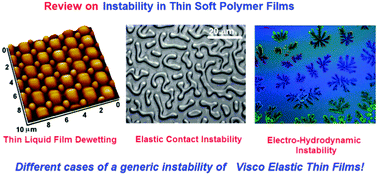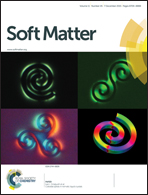Instability, self-organization and pattern formation in thin soft films
Abstract
The free surface of a thin soft polymer film is often found to become unstable and self-organizes into various meso-scale structures. In this article we classify the instability of a thin polymer film into three broad categories, which are: category 1: instability of an ultra-thin (<100 nm) viscous film engendered by amplification of thermally excited surface capillary waves due to interfacial dispersive van der Waals forces; category 2: instability arising from the attractive inter-surface interactions between the free surface of a soft film exhibiting room temperature elasticity and another rigid surface in its contact proximity; and category 3: instability caused by an externally applied field such as an electric field or a thermal gradient, observed in both viscous and elastic films. We review the salient features of each instability class and highlight how characteristic length scales, feature morphologies, evolution pathways, etc. depend on initial properties such as film thickness, visco-elasticity (rheology), residual stress, and film preparation conditions. We emphasize various possible strategies for aligning and ordering of the otherwise isotropic structures by combining the essential concepts of bottom-up and top-down approaches. A perspective, including a possible future direction of research, novelty and limitations of the methods, particularly in comparison to the existing patterning techniques, is also presented for each setting.


 Please wait while we load your content...
Please wait while we load your content...